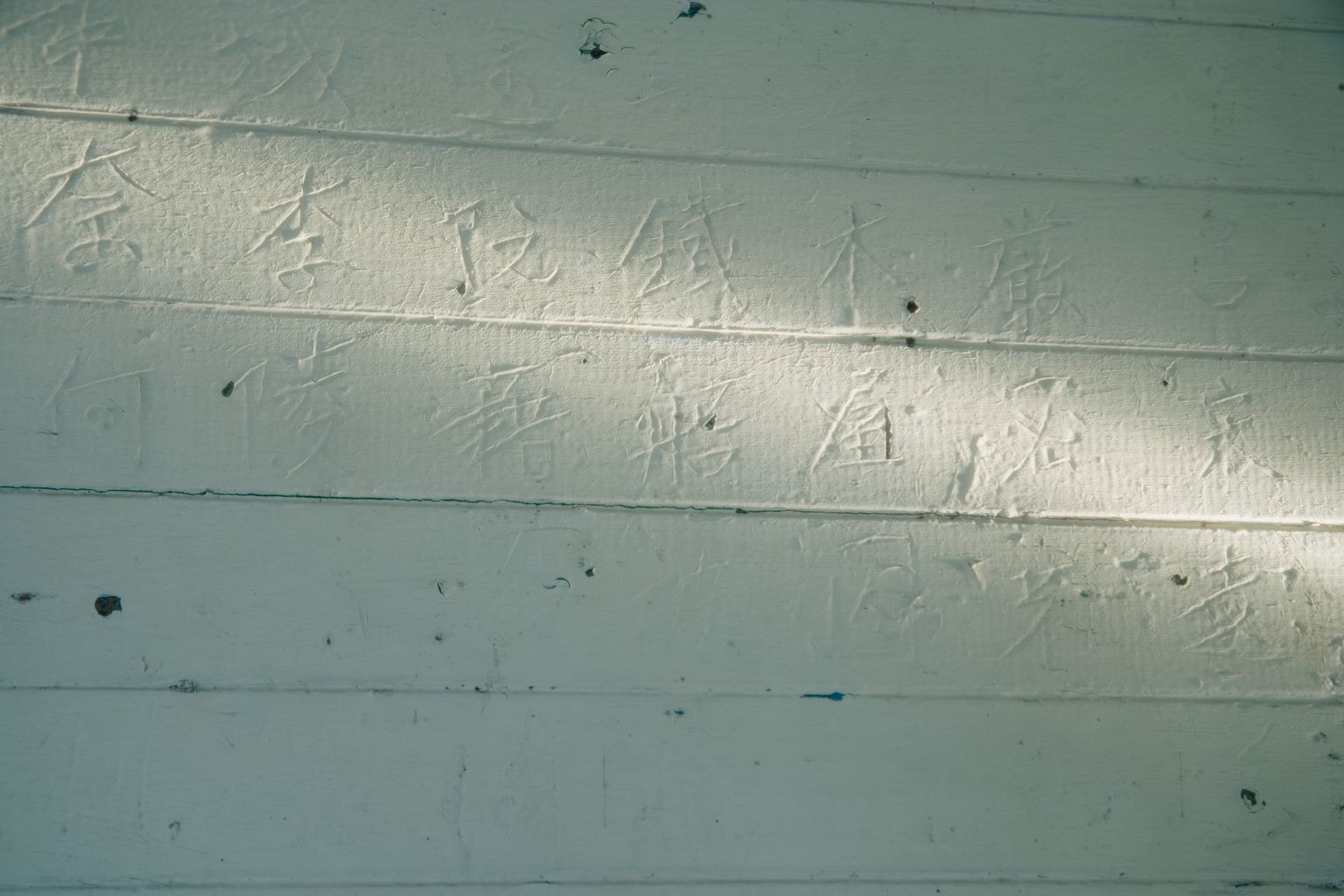Yao Lu et al., “Priming COVID-19 Salience Increases Prejudice and Discriminatory Intent against Asians and Hispanics,” Proceedings of the National Academy of Sciences 118, no. 36 (September 7, 2021).
“Pelosi Remarks at Media Availability Following Visit to San Francisco’s Chinatown and Meetings with Local Business Owners: Press Release” (Office of the Speaker of the House, February 24, 2020), https://www.speaker.gov/newsroom/22420. Lisa M. Krieger, “Coronavirus: Where Did All Our Old Quarantine Facilities Go?,” The Mercury News, February 24, 2020, ➝.
Luigi F. Lucaccini, “The Public Health Service on Angel Island,” Public Health Reports (1974-) 111, no. 1 (1996): 92.
Lucaccini, “The Public Health Service on Angel Island,” 92.
Michael C. LeMay, Doctors at the Borders: Immigration and the Rise of Public Health: Immigration and the Rise of Public Health (ABC-CLIO, 2015), 101.
Arthur B. Stout, Chinese Immigration and the Physiological Causes of the Decay of a Nation (Agnew & Deffebach, 1862).
“Untitled Article ("The Anti-Chinese Convention Has Adjourned...),” The Daily Alta California, March 14, 1886, California Daily Newspaper Collection, UCR Center for Bibliographical Studies and Research.
Grover Cleveland, “October 1, 1888: Message Regarding Chinese Exclusion Act,” Presidential Speeches | Miller Center, University of Virginia, October 20, 2016, ➝.
Though Chinese immigrants were the most targeted, arrivals from other Asian countries and some Europeans were subject to similar, though not as stringent systems of segregation, detention and deportation, as the station aged. Future uses of “Asian” in place of “Chinese” refer to instances in which all Asian immigrants, not just Chinese, were subject to specific conditions. See Erika Lee and Judy Yung, Angel Island: Immigrant Gateway to America (Oxford, New York: Oxford University Press, 2012), 4.
Louis Stellmann, “San Francisco to Have the Finest Immigrant Station in the World,” San Francisco Chronicle (1869-Current File), August 18, 1907.
“Metcalf to Make Inspection Tour,” San Francisco Examiner, September 28, 1904.
Statue of Liberty National Monument (N.M.) and Ellis Island, Ellis Island Development Concept Plan: Environmental Impact Statement, 2005, 5.
“US Immigration Station, Angel Island, USDI/NPS NRHP Registration Form” (National Historic Landmarks Survey, National Park Service, October 15, 1995), 4, National Register of Historic Places.
While detention and deportation were overwhelmingly applied to Chinese immigrants under the Chinese Exclusion Acts, the apparatus was applied in increasing cases to other Asians and Europeans in later decades of the station’s operation. In particular, the 1924 Immigration Act established quotas on immigrants from many countries aside from China, who were also detained or deported if the number of arrivals already processed from their country of origin had already reached their countries’ quotas. See Lee and Yung, Angel Island.
Stellmann, “San Francisco to Have the Finest Immigrant Station in the World.”
Beth Lew-Williams, The Chinese Must Go: Violence, Exclusion, and the Making of the Alien in America, 1st Edition (Cambridge, Massachusetts; London, England: Harvard University Press, 2018), 110, 230–231.
Lee and Yung, Angel Island, 61.
Lee and Yung, Angel Island, 39.; Stellmann, “San Francisco to Have the Finest Immigrant Station in the World.”
Him Mark Lai, “Island of Immortals: Chinese Immigrants and the Angel Island Immigration Station,” California History 57, no. 1 (1978): 94.
Joseph Bolten, Cerebrospinal Meningitis at Angel Island Immigration Station, Calif (Public Health Reports (1896-1970), 1921), 593–594.
Lee and Yung, 22.
Michi Kawai, “A Day on Angel Island,” Joshi Seinen-Kai 12, no. 8–9 (September 1915): 49–53.
Him Mark Lai, “Island of Immortals”: 97.
“Pei, Ieoh Ming - Case Number: 35527/015-16” (Department of Justice, Immigration and Naturalization Service, San Francisco District Office, August 28, 1935), 35527/015-16, National Archives at San Francisco (RW-SB).
“Immigration Station Needs Pointed Out: Elimination of Disease and Greater Efficiency Will Follow,” San Francisco Chronicle (December 20, 1922).
Frederick Law Olmsted, Jr., “Report on the Recreational Possibilities and Values of Angel Island, San Francisco Bay,” 1947, Angel Island Foundation Committee Records, 1950-1966 vol. 1, UC Berkeley: Bancroft Library; Marshall McDonald, “Recommendations for the Historical Recreational Development of Angel Island,” 1966, Him Mark Lai Papers, Box 2, Folder 4, UC Berkeley: Ethnic Studies Library, Asian American Studies Archives.
Him Mark Lai, Genny Lim, and Judy Yung, eds., Island: Poetry and History of Chinese Immigrants on Angel Island, 1910-1940 (Seattle: University of Washington Press, 2014), 19.
Karen Umemoto, “‘On Strike!’ San Francisco State College Strike, 1968–69: The Role of Asian American Students,” Amerasia Journal 15, no. 1 (January 1, 1989): 25.
Lee and Yung, Angel Island, 307.
Katherine Bishop, “Angel Island Journal: Saving Voices of the Other Ellis Island,” The New York Times, November 11, 1990.
Patricia Leigh Brown, “Poetic Justice for a Feared Immigrant Stop,” The New York Times (December 7, 2005), ➝.
Notably, the descendants of detainees were affected by the site’s preservation, though in different ways than their parents and relatives. This perhaps demonstrates what Marianne Hirsch has termed “postmemory,” or a remembering of trauma of generations before, passed down both directly and indirectly, as well as the “reading of silence” Gabriele Schwab identifies in such a “post-generation.” Hirsch, The Generation of Postmemory, 6.
Carly Graf, “Some San Francisco Ferries Could Stop Running to Angel Island and Tiburon,” The San Francisco Examiner (December 20, 2020), ➝.
Viet Thanh Nguyen, Nothing Ever Dies: Vietnam and the Memory of War (Cambridge, Massachusetts; London, England: Harvard University Press, 2016), 19.
Merry Firschein, “Angel Island, the Other Ellis Island - Exhibition Tells the Story of Chinese Entry in California,” The Record (Hackensack, NJ) (March 9, 2003).
Corey Takahashi, “West Coast Legacy Of the ‘Paper People,’” Newsday, accessed December 16, 2020.
“Cho, Pyeng Ok - Case Number: 13203/012-02,” China Passenger January 26, 1914; Immigration Arrival Investigation Case Files, 1884-1944. Record Group 85: Records of the Immigration and Naturalization Service, 1787-2004.
